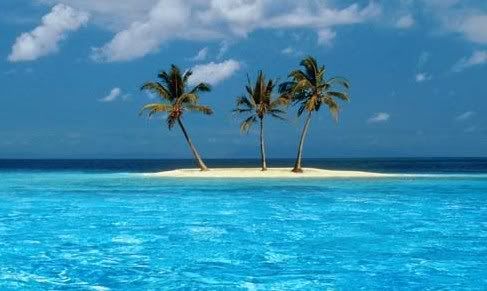Presenting the tourist destinations of Bohol that I’ve gone to. The entire province of Bohol is a tourism haven rich in history, heritage, and nature. It would take days to completely visit its bounties. Thus in my one-day tour, here is what i got:
St. Joseph's Cathedral, Tagbilaran City (built 1894)
Provincial Capitol (built 1860)
A Rizal Park flocked by doves is located in front of the Capitol Building and the St. Joseph’s Cathedral serving as the centerpiece. The Tagbilaran National Museum was also just the next block after the Capitol.
Blood Compact Monument (located in Bool, 4 km from Tagbilaran City)
A marker that identifies the spot where Datu Sikatuna, a native Boholano chieftain, forged a Blood Compact with Don Miguel Lopez de Legazpi, representing the King of Spain, for the purpose of fostering friendly relations between the two countries. The Blood Compact on March 16, 1565 is considered as the first “Treaty of Friendship” between the brown and white races. It is locally known as Sandugo which is celebrated by Boholanos every July.

Baclayon Church and Museum (located in Baclayon, 7 km from Tagbilaran City)
The museum is located inside the convent, or BaclayonChurch, one of the oldest stone churches in the Philippines. It contains a rich collection of religious art, ecclesiastical vestments, librettos of church music printed in Latin on animal skins, and other priceless relics and artifacts dating back to the early 16th century.
One of the oldest stone churches in the Philippines. This ancient massive edifice still retains its century-old architectural design. Both in the external and internal portions of the church are various interesting relics and artifacts dating back to the early 16th century, which have been placed at the Baclayon Museum. Baclayon is also the oldest town in Bohol and the mother town of Alburquerque, Balilihan, and Sikatuna.
Museum Admission: Php25.00

See-a-Tarsier Stopover (along the road while heading to the key destinations)
One need not go to the Corella sanctuary of tarsiers especially if youre catching the 1-day tour. Along the road is a stopover where you can take a look of these primates.
.jpg)


Loboc River Cruise (located in Loboc, 21 km from the Tagbilaran City)
Enjoy a fascinating boat ride in the serene waters of Loboc River, starting from Loay Bridge which is the outlet of the river, and along the palm-fringed banks inland. The ride via motorized pump boat ends near the Tontonan water falls, where several falls with cascading water provides a pleasant bathing session.
Credit to Ceasar Montano for popularizing the Loboc River in his movie Panaghoy sa Suba. This getaway serving fiesta buffet and operates until 2 p.m. only is a hit to both Filipinos and foreigners; I even saw St. Paul Sisters aboard. Facing the Loboc river wharf is the 1608 built Loboc Church and Museum with the controversial unfinished bridge pointing on it. Story says the bridge was a front to a treasure-hunting plot.
Cruise Admission: Php280.00 inclusive of lunch

Tigbao Hanging Bridge (located in Loboc, 39 km from Tagbilaran City)
Backed by the influx of tourists, this link has become a stop. Many are entranced by the bridge itself, and the background – the clean Loboc River and the trees along the banks.
Chocolate Hills (located in Carmen, 55 km from Tagbilaran City)
The most famous tourist attraction in Bohol. Among the 1,268 perfectly cone-shaped hills which abound in Central Bohol, two have been developed into a resort. On top of the hills is a complex that offers accommodation, conference rooms, restaurants, and a view deck.
Another dream destination down and counting for more to conquer. Who would not dream personally sighting this wonderful work and a must to see wonder of nature? Well, I must say I’m a lucky one. Chocolates hills never fail to amaze.
If soonest is not your plan to take a sight of this world-renowned heritage, I hope you could just vote it to the New Seven Wonders of Nature tilt. Cast your vote here.
Admission fee: Php25.00

Loboc-Bilar Manmade Forest
Amazing shades of tall trees standing along the road. For a nature-lover like me, the forest is a means to commune with Mother Nature. From the humid climate in the downtown, the forest provides a soothing breeze that cools the heat down.
Clarin Ancestral House (located in Loay, 18 km from Tagbilaran City)
Owned and maintained by descendants of the Clarin family, the ancestral house is located at the poblacion. Guests are in for a nostalgic trip as they enter the house replete with interesting antique jars, lamps, kitchenware, and furniture.
An equally entertaining tour guide will bring you to every corners of the house in her expertise.
Donation: Php20.00

Prony, the biggest and longest python in captivity
For sure everyone have watched it featured in some television shows. At 5.5 feet long and an electric post size, I consider it gigantic. The caretaker says it was fed with a 50-kilo hog every month so it changes skin also that often and growing. As much as I wanted to take a pose and try caressing it, our arrival at past 5pm was already late for the photo ops. The python named after its adopted guardian Prony will celebrate its birthday on October.
Admission: Php5.00
With many tourist spots I missed going into and for not fully enjoying the tour because of the lose of my digicam that time, I would surely come back if I have the opportunity.
Some photo captions adopted from www.travelmart.net










































.jpg)




























